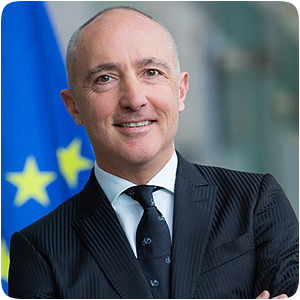 Rail is the greenest, most environmentally friendly and energy efficient mode of transport, unless you walk or cycle. Rail is set to play a crucial role in helping the EU become climate neutral by 2050 and accelerating the delivery of EU's ambitious climate objectives outlined in the European Green Deal. There is indeed no doubt of its importance when it comes to decarbonising Europe's transport sector as rail is placed at the heart of the EU's green recovery strategy, which also aims to mitigate the consequences of the COVID-19 pandemic.
Rail is the greenest, most environmentally friendly and energy efficient mode of transport, unless you walk or cycle. Rail is set to play a crucial role in helping the EU become climate neutral by 2050 and accelerating the delivery of EU's ambitious climate objectives outlined in the European Green Deal. There is indeed no doubt of its importance when it comes to decarbonising Europe's transport sector as rail is placed at the heart of the EU's green recovery strategy, which also aims to mitigate the consequences of the COVID-19 pandemic.
The European Commission's Sustainable and Smart Mobility Strategy, which was announced in December 2020, sets out targets for Europe’s transport system to become more digitalised and environmentally friendly, as well as more resilient to future crises, helping to cut emissions by 90% by 2050 and achieving the targets of the European Green Deal. Among the specific goals for rail are doubling highspeed rail traffic by 2030 as the continent strives for all journeys of less than 500km to be carbon neutral by 2030 and increasing rail freight by 50% of current levels by 2030 and 100% by 2050.
The new Europe's Rail Joint Undertaking, which is the universal successor of the Shift2Rail research and innovation programme, is set to directly contribute to these policy objectives. Officially launched on 21 February 2022, the partnership aims to accelerate research and development in innovative technologies and operational solutions. The programme will make rail services more flexible, more affordable, more reliable and safe, increasing capacity and delivering performance.
Its Multi-Annual Work Programme summarises the various areas that will accelerate the much-needed green transformation. For instance, flagship area four is directly looking at a sustainable and green rail sector. This area has the goal of providing new innovative products and services based on leading edge technologies to minimise the overall energy consumption and environmental impact of the railway system, to make this transportation mode healthier, more attractive and to provide resiliency against climate change at a reduced total cost of ownership.
Moreover, crucial to the green transformation, rail freight is a key focus area of Europe's Rail. This fifth flagship area will contribute to delivering a seamless rail freight system, integrating information and data for all the actors involved, and pushing for fully digital rail freight operations, breaking down existing barriers that undermine the performance of rail freight, such as coupling, brake controls, language issues, and other technologies or operational processes. Successful stories such as the DAC (Digital Automated Coupler) technology, to be adopted as an EU standard by all Member States, show the added value of the integrated system approach to make efficient use of the new technologies.
In the centre of the Europe’s Rail programme is bringing these and the predecessor programme’s innovative solutions to the market via a system of systems approach. Shift2Rail has already laid some groundwork in terms of greening rail. For noise, an auralisation and visualisation tool was developed which enables the inclusion of human perception in the assessment of different noise mitigation scenarios when building or upgrading a railway line. On the energy front, an eco-labelling methodology has been proposed that could provide a good basis for the sector for moving forward.
There are many more examples showcasing the work that has already been done, however, much more can still be achieved. With this in mind, the new partnership aims to ensure that rail becomes the backbone of a green, sustainable and carbonneutral mobility in Europe.